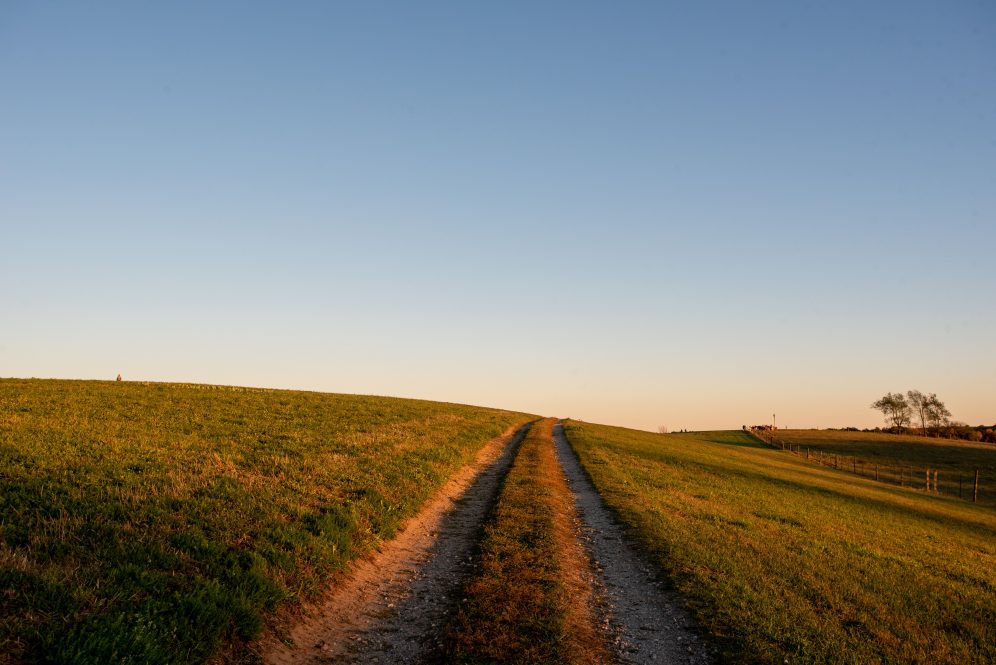Nature is a great healer. A stroll in the great outdoors can decrease anxiety and stress, and it can alleviate depression. Spending time outside can lower blood pressure and levels of the stress hormone cortisol. Study after study shows the power that nature has in improving our lives, health, and ability to concentrate. Some doctors and mental health providers are even writing prescriptions for spending time in nature.
Now, UConn Ecology and Evolutionary Biology (EEB) researcher Cynthia Jones and a team of faculty, staff, and students have created a resource called NatureRx at UConn to help others realize the benefits of being out in the environment, and where around campus they can experience nature.
Jones explains that the concept started at Cornell University, and has since expanded into a Campus NatureRx Network, including over 20 other campuses and now including UConn. Cornell, much like UConn, is home to abundant green spaces.
“The program at Cornell was based on a similar program that was started in Washington, D.C. called Parks Rx America by a physician who felt like his patients needed more exercise. He inventoried local parks, and then started writing park prescriptions for his patients to spend time outside,” Jones says.
Making NatureRx happen at UConn has been a collaborative effort over the course of the pandemic. Jones reached out to several others, including EEB Ph.D. candidate Henry Frye, to be a part of the process and help with various aspects of the project.
“Henry mentioned that he was in the process of getting a GIS certificate and that he was looking for projects to improve his mapping skills, so I recruited him,” says Jones. “I also turned to another graduate student on our department, Susan McEvoy, who had worked as a website developer before she started graduate school in EEB. At the time, we couldn’t meet in person, but we were able to work remotely and now we feel like it’s time for people to know about it.”
For the mapping, Frye says the first step was determining the sorts of places people would be interested in visiting.
“We decided to start with locations on campus or nearby within walking distance. We always had the goal in mind that we would provide a very wide array of what could be considered nature. I think it’s important because different people have different levels of comfort. Some people aren’t comfortable going in the forest, but there’s a lot of green spaces on campus that have benches and are quieter.”
The researchers took some walking around campus on the lookout for a variety of inviting spaces to visit in between classes or for longer journeys. They added nearby trails and parks from all over Mansfield because they realized there wasn’t a single resource that incorporated all of the green spaces and trails in the area surrounding campus.
“Students might not think to look at the town website for this kind of information, so we wanted a UConn resource that included all of the resources around town, including local trust land, like Joshua’s Trust, or town or state properties,” says Frye.
Jones adds, “In linking up all the trails, we found that there are almost 125 miles of trails just within the town of Mansfield, which I thought was really amazing.”
Along with the mapping, the team included descriptions of the various places which were written by students in the Landscape Architecture Program.
Jones adds that the program may also serve as a way to connect researchers from across campus, with the hope of inspiring collaboration and develop courses within the theme.
“We are hoping that by bringing people with really different perspectives together, we can generate some synergism and maybe new collaborations of potential researchers or programs,” says Jones.
“I want people, students in particular, to understand that it can make a big difference if they spend just a few minutes outside restoring their concentration and changing their environment and experiencing a sense of awe,” says Jones. “The thing that’s interesting to me is we don’t really fully understand why, but it works.”
The project was truly well timed says Frye, who welcomed the opportunity to get his regular dose of nature and help others do the same.
“I did a lot of hiking for this project, especially during the pandemic, so it was really a treat for me to have an excuse that was a work-related one. We really want people to care about nature; it’s hard to care about something if you don’t have much exposure to it and if you’re afraid to interact with it. I hope that the website helps with that because as a student it’s difficult to figure out where to go. The town has a lot of insiders who know where things are already but getting that information into student hands and making that more accessible for everyone is really a good thing to do for the broader UConn community.”
Visit NatureRx for ideas about where to explore.
Celebrate NatureRx with a kickoff two-days of events starting with a national, virtual, free event called Everyone’s Earth: Conversations on Race and Environment on 9/30 from 12:30-2:30, followed by a free in-person mini-symposium on 10/1 about NatureRx at UConn from 10:00-12:00. To submit your projects, programs, and events for inclusion on the NatureRx website, please contact Cindi Jones at Cynthia.s.jones@uconn.edu.



